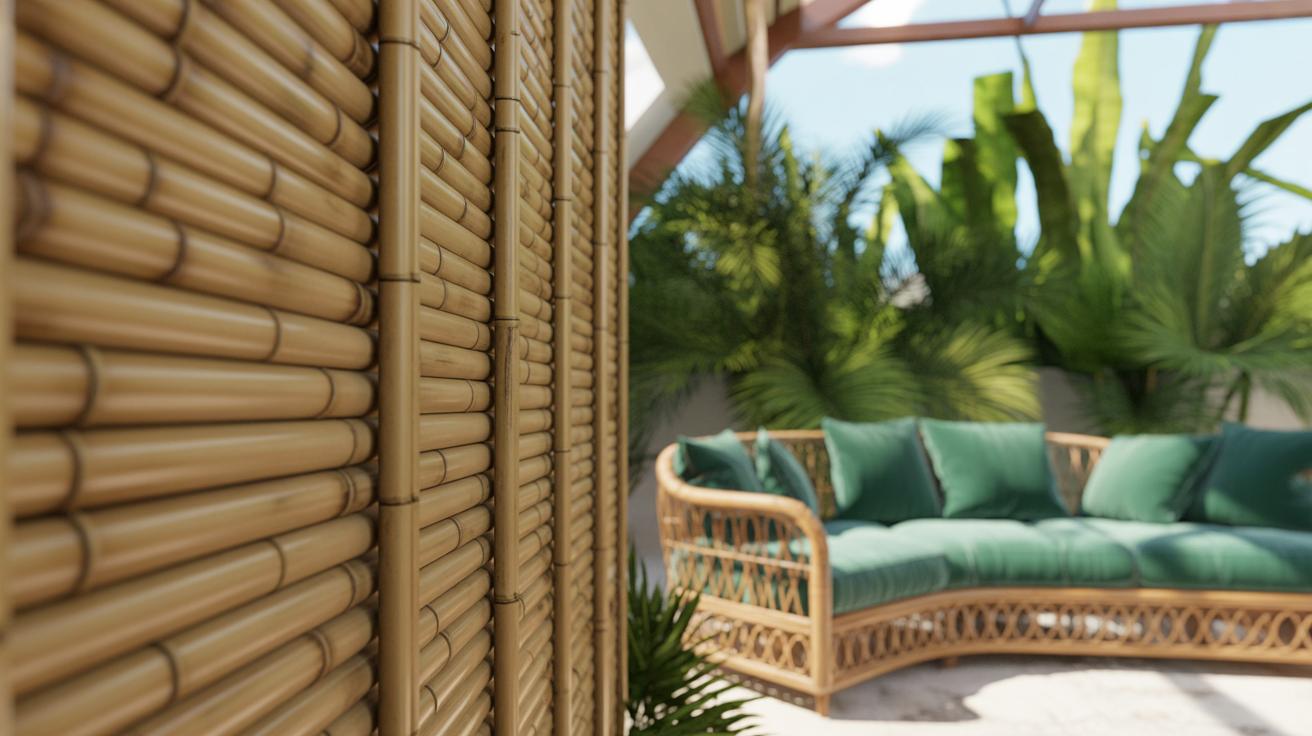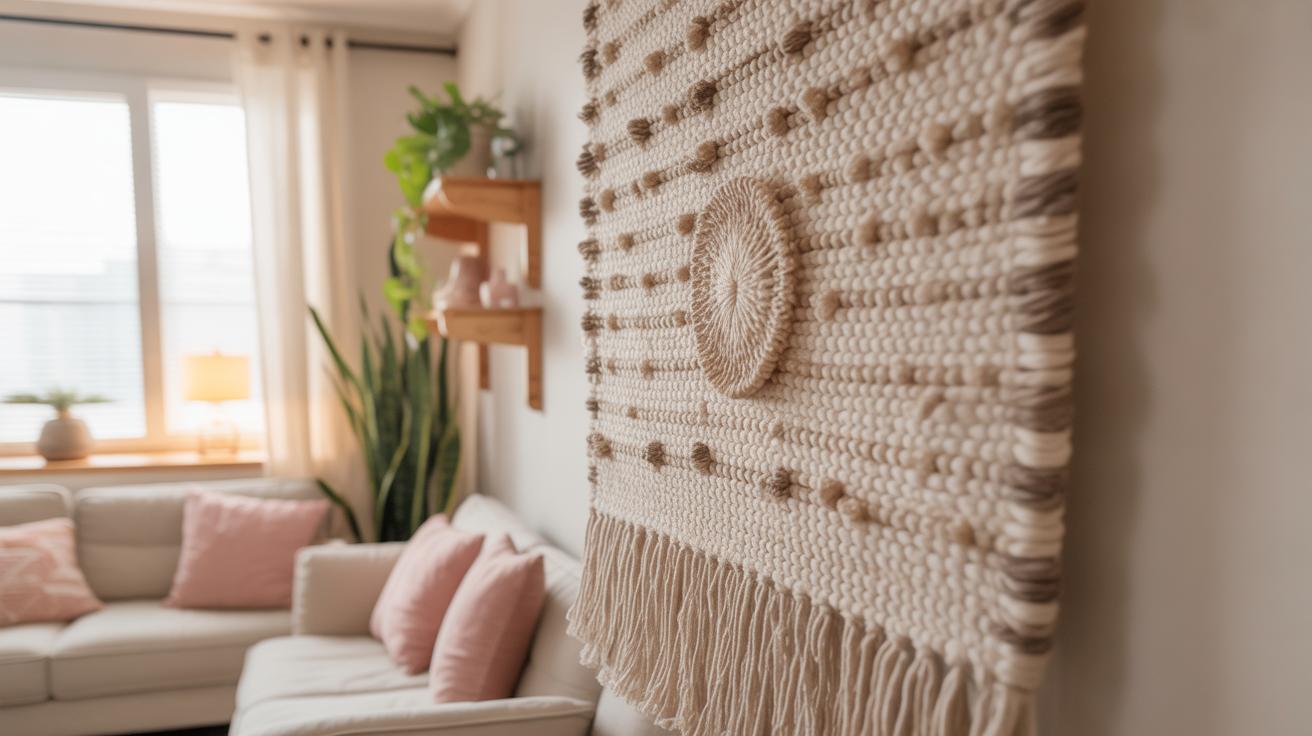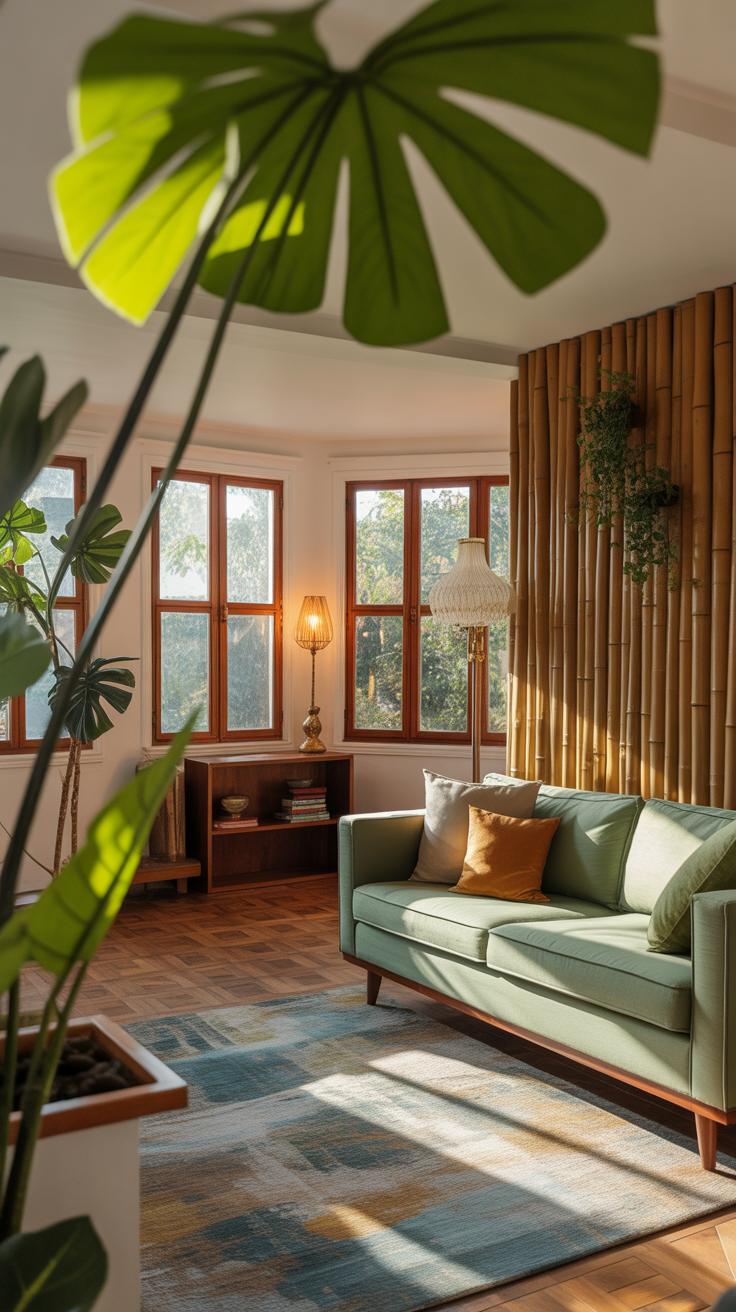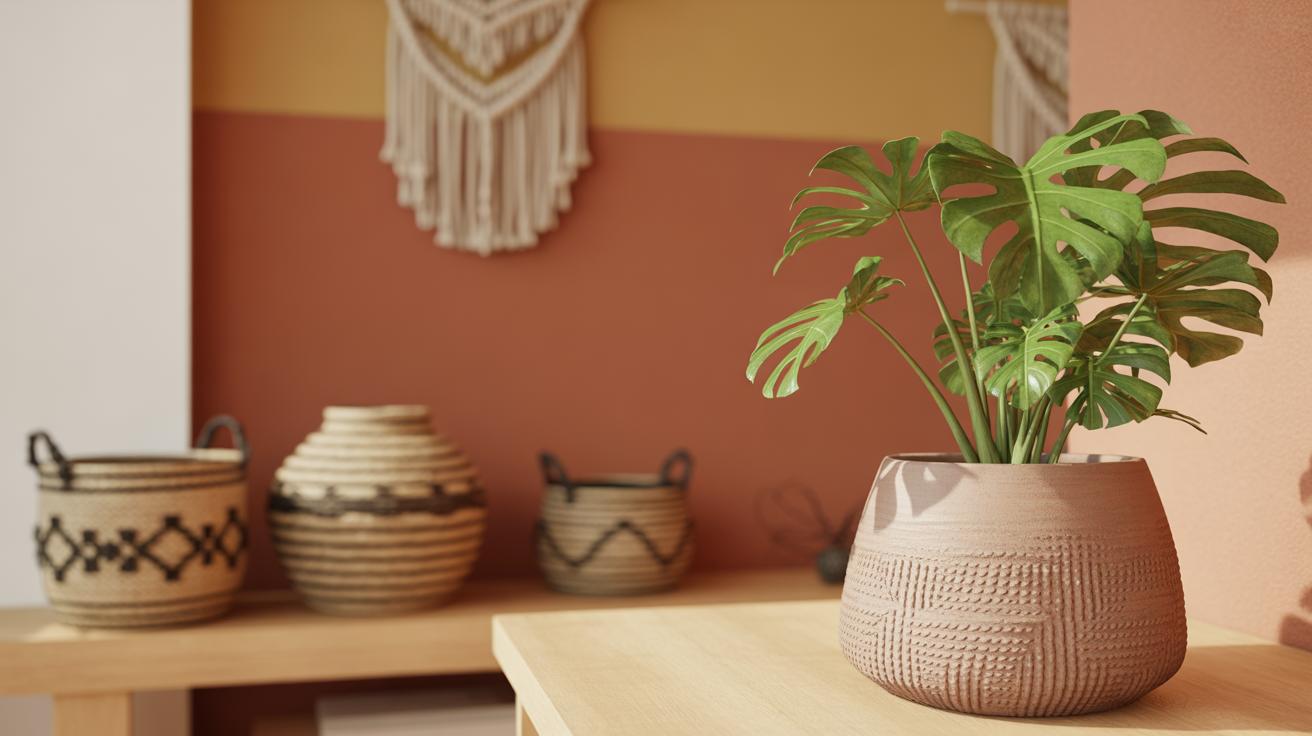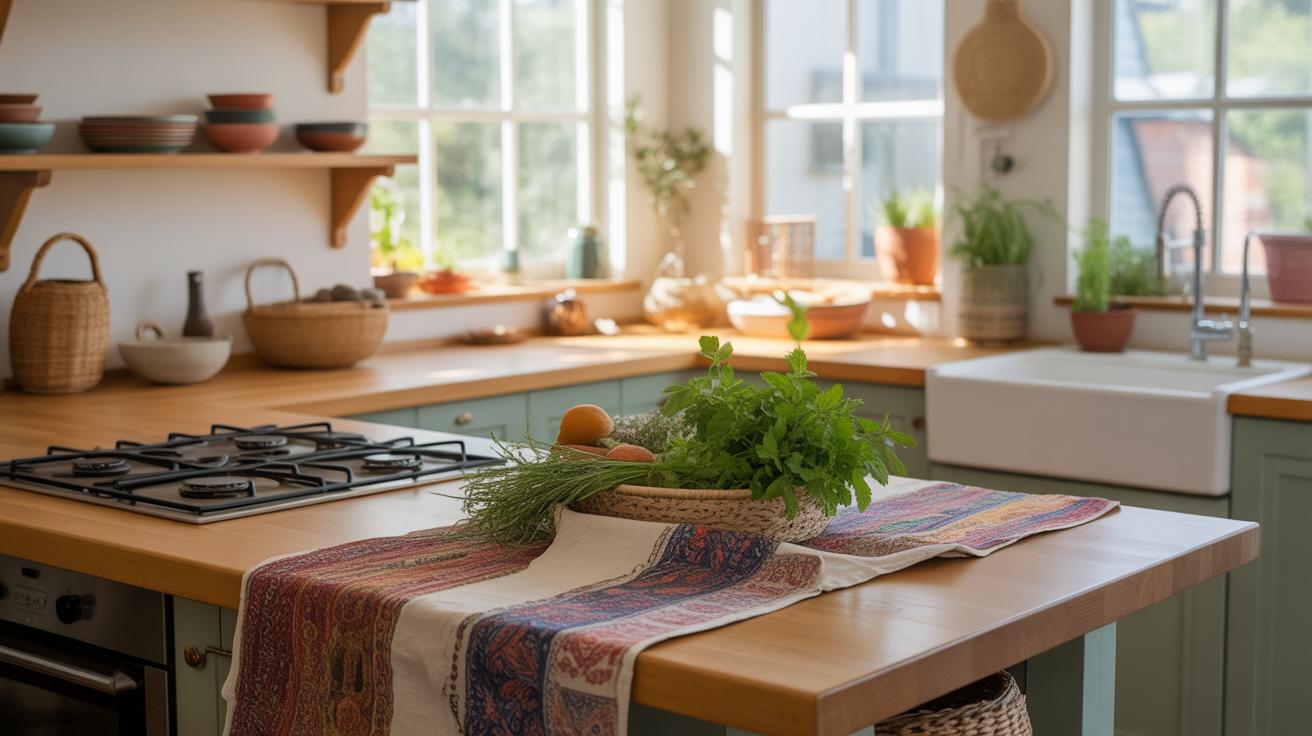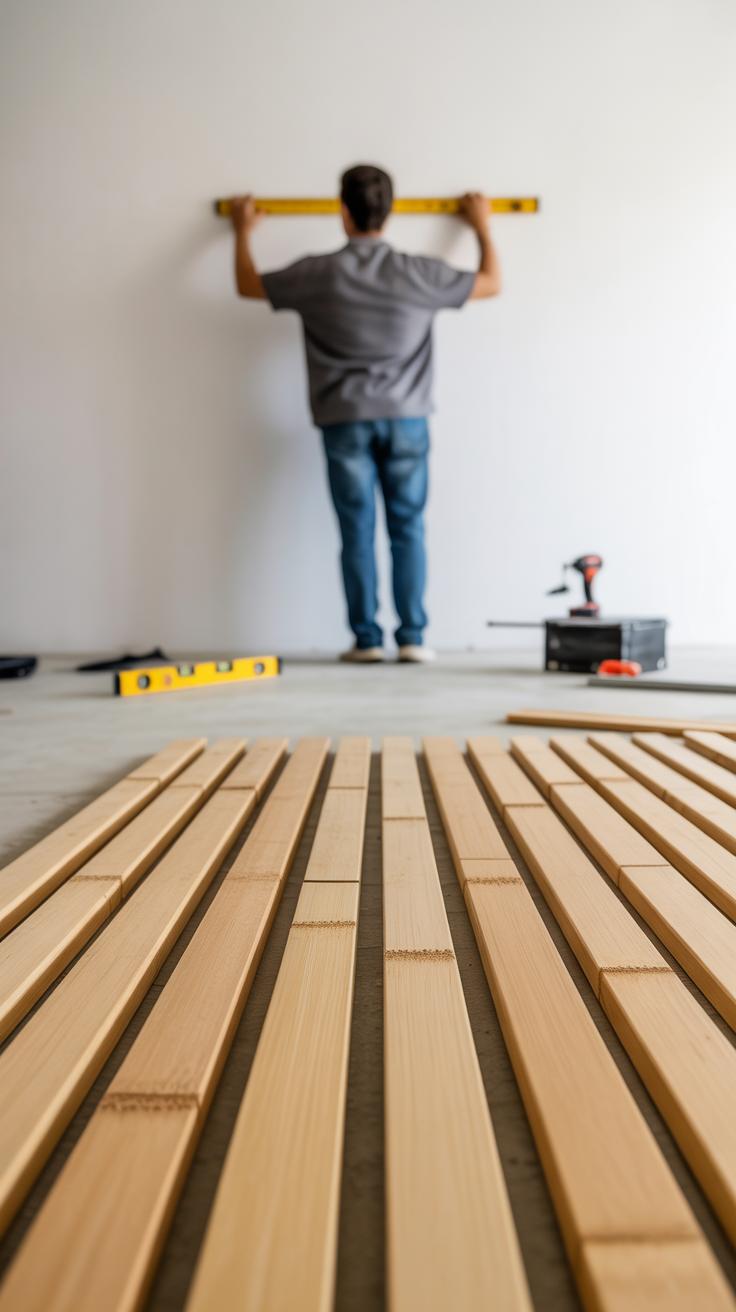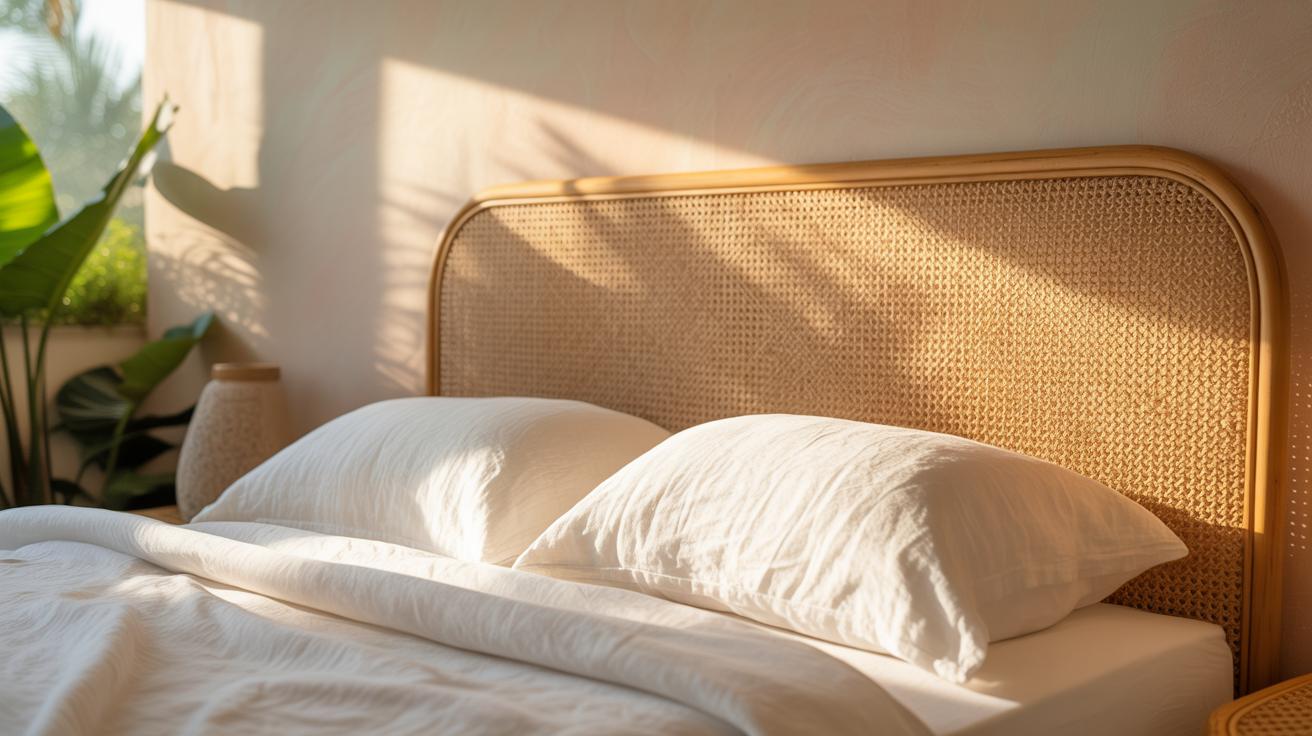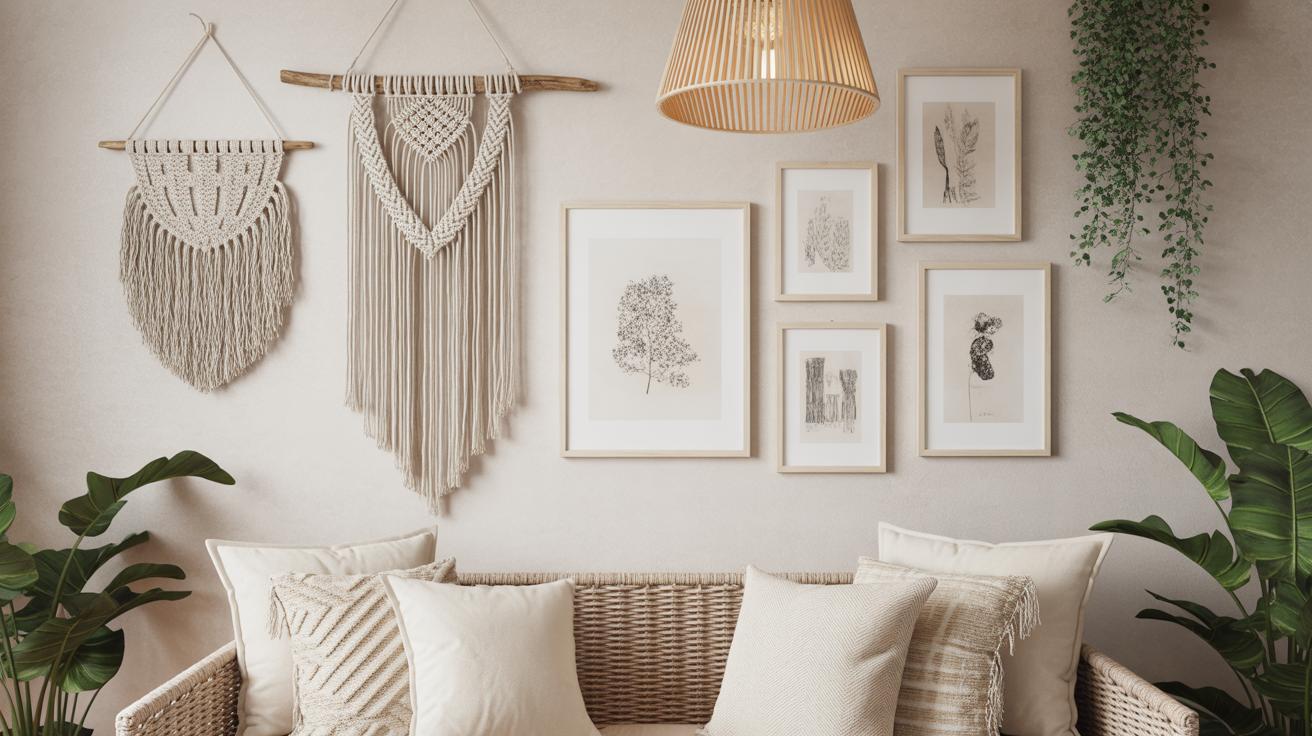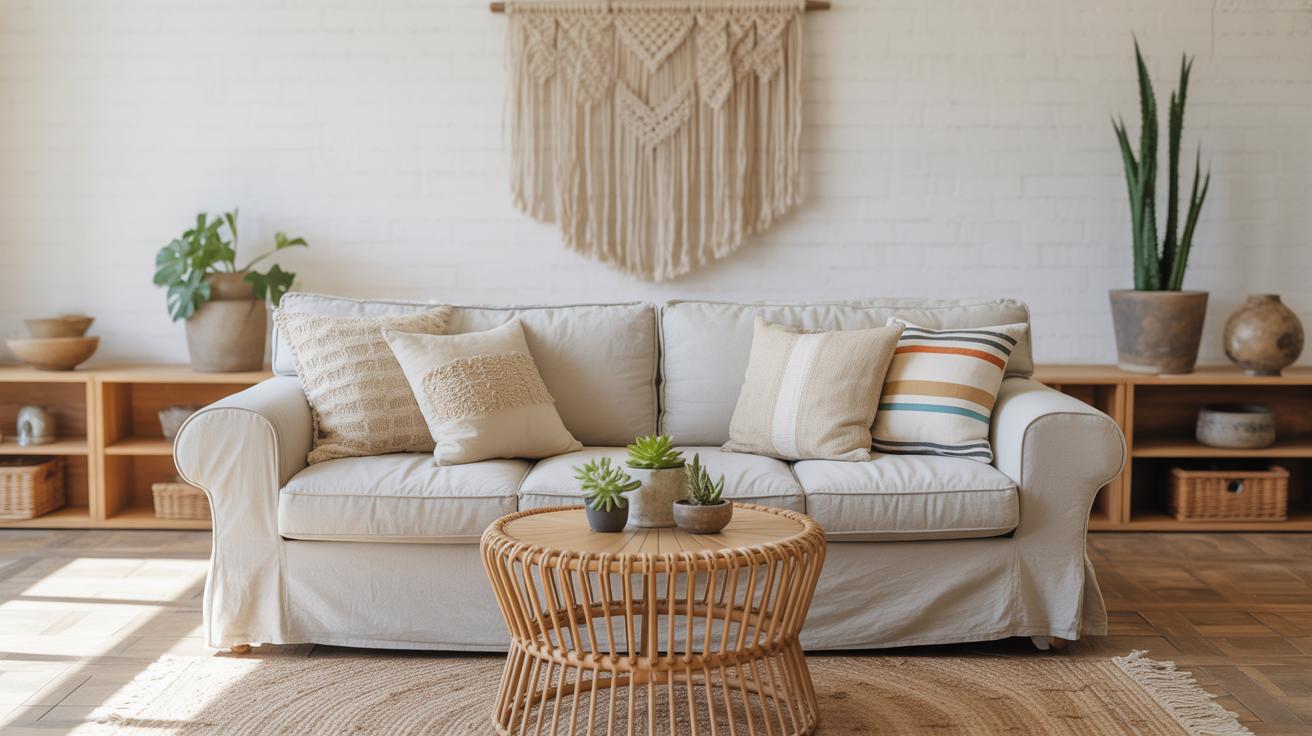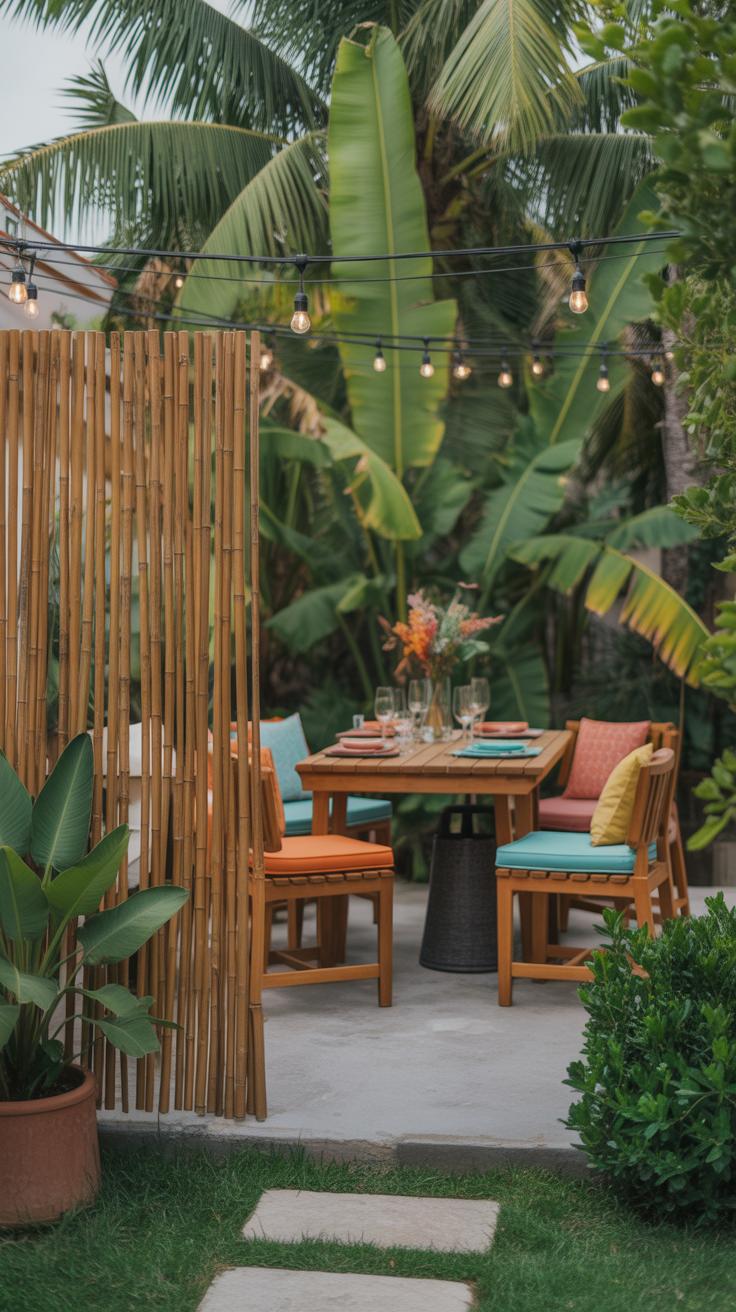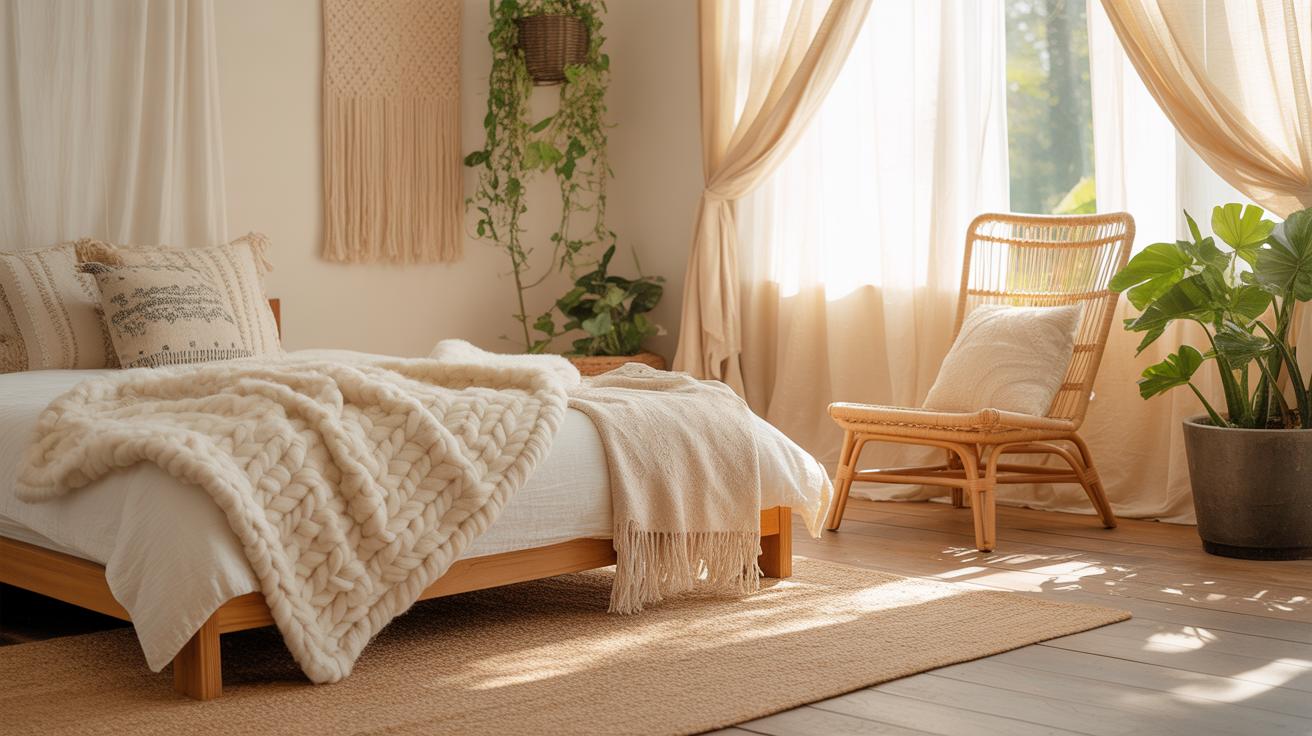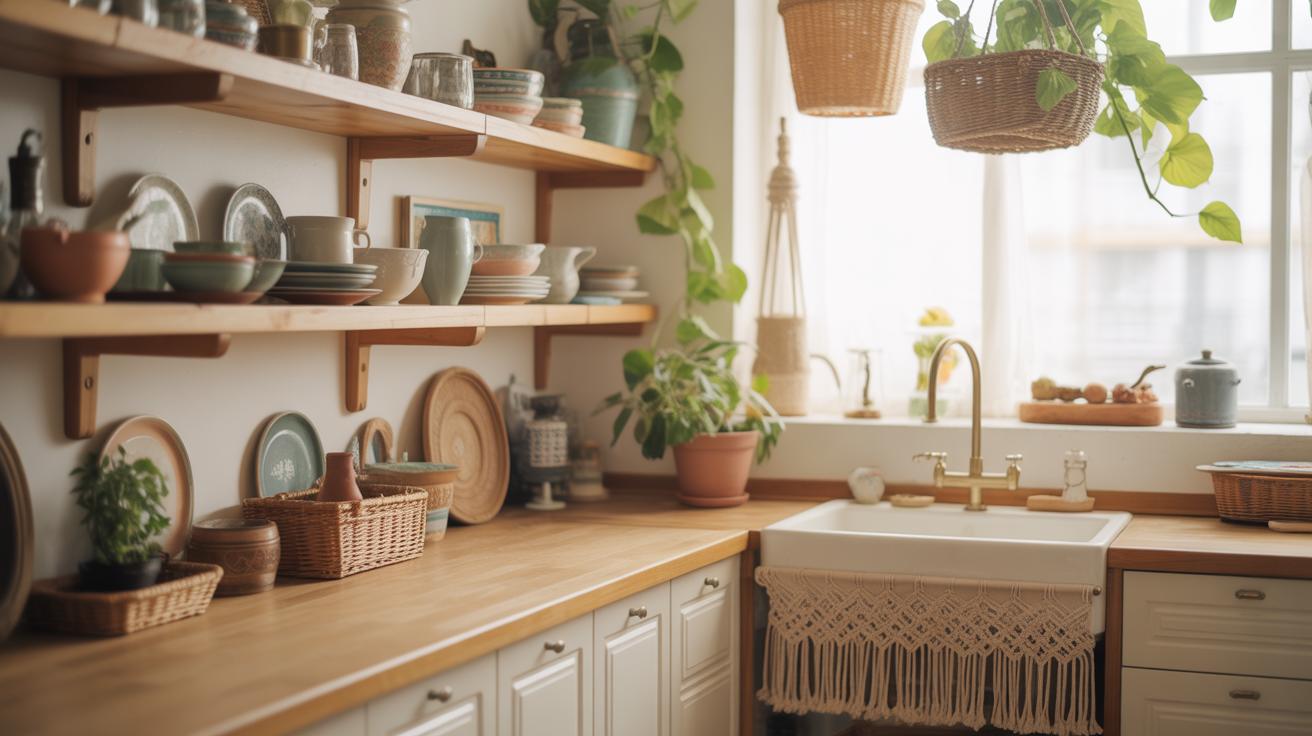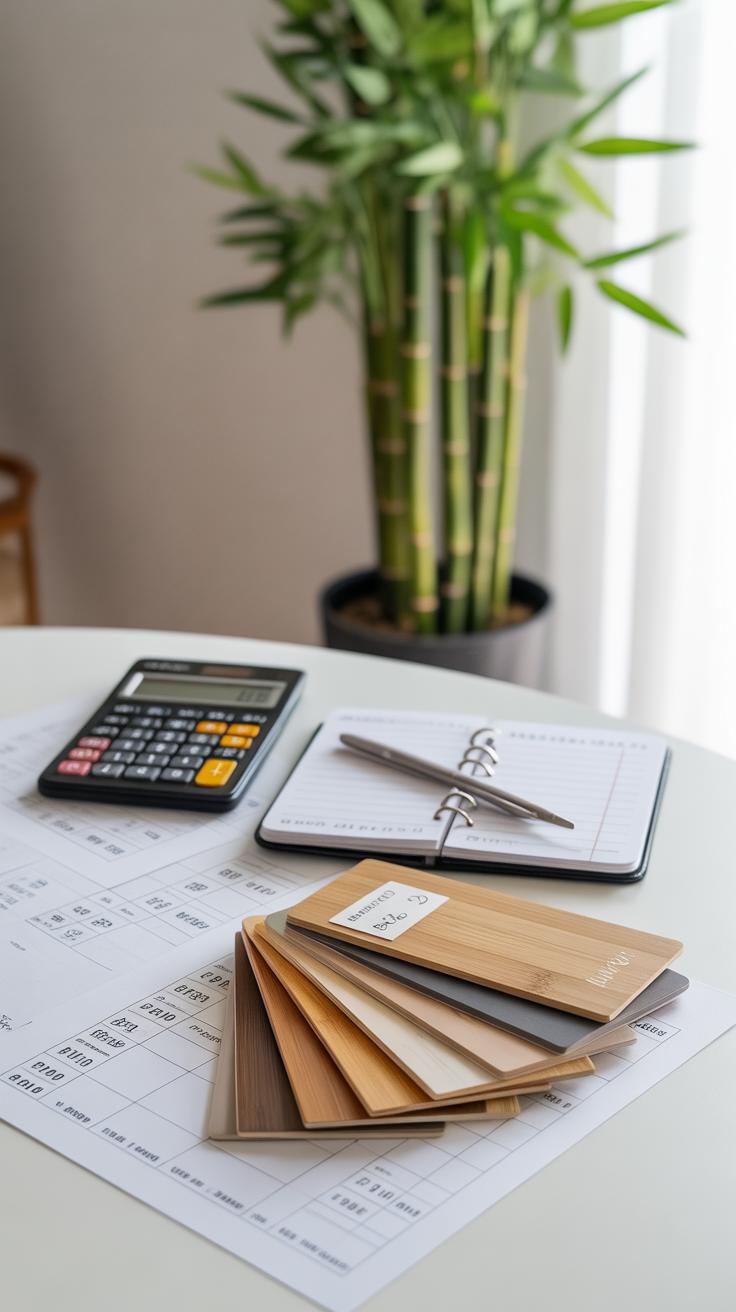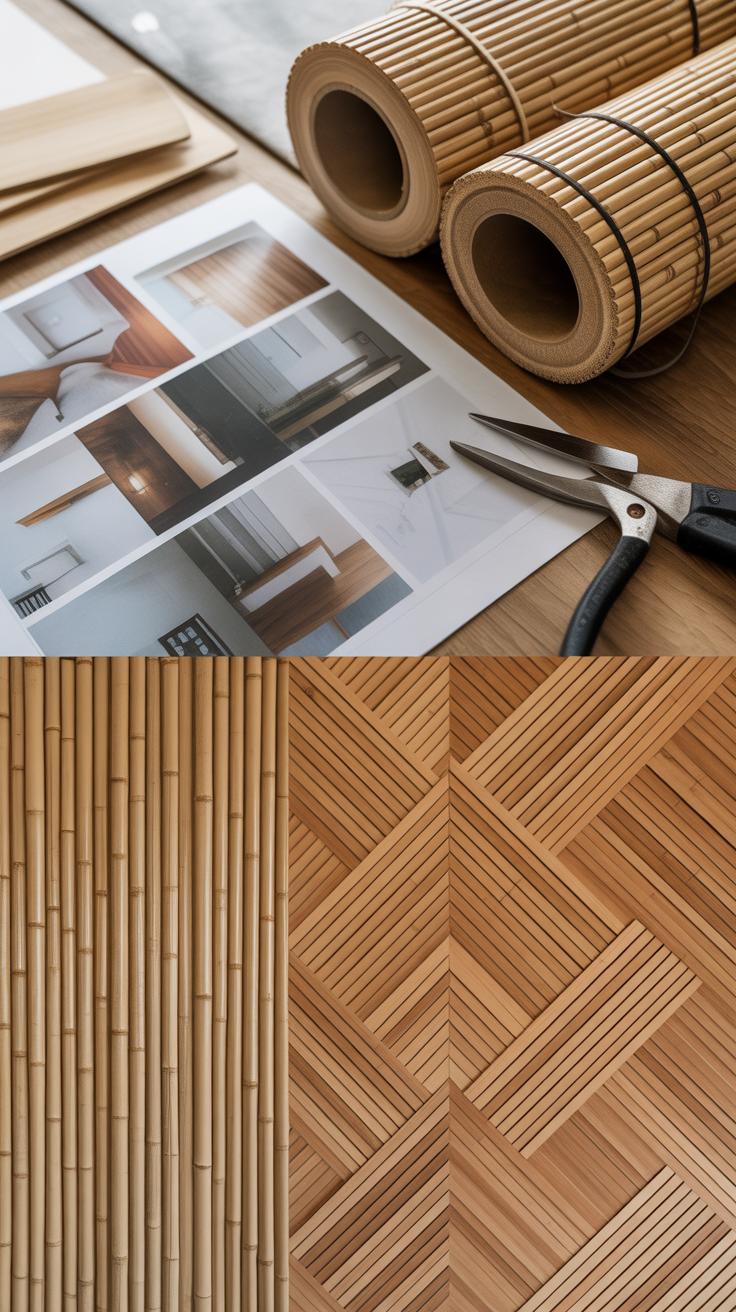Introduction
Creating a tropical atmosphere in your home or garden can be simple and stylish with bamboo wall accents. These natural elements bring warmth, texture, and an organic touch that instantly transforms a space. Bamboo is not only visually appealing but also a sustainable and strong material that fits well with many decor styles. Its fast growth and renewability make it an excellent choice to add eco-friendly charm to your surroundings.
In this article, you will discover the benefits of bamboo walls, various design ideas, and practical tips for installation and care. Whether you want to decorate an interior room or an outdoor area, bamboo walls offer versatile options to create that breezy, tropical vibe you desire. Read on to learn how to bring nature closer to you using stunning bamboo accents.
Understanding Bamboo As A Building Material
Bamboo is a type of grass that grows tall and straight, sometimes reaching over 30 feet in just a few months. Unlike trees, bamboo doesn’t develop rings as it grows, which makes it quite different from what you might expect in typical building materials. Its stems, called culms, are naturally hollow, which keeps the material light, but surprisingly strong. This combination of strength and low weight is one reason bamboo is popular for construction, especially in places where heavy materials might be hard to handle.
The way bamboo grows is fascinating—it can regenerate quickly from its root system, so you don’t need to replant every time you harvest it. This fast growth means bamboo is a renewable resource, unlike many slow-growing trees used in traditional building. So, when you use bamboo walls or accents, you’re working with something that’s been around forever but also grows fast enough to keep up with demand, which feels like a clever way to be kind to the planet.
What Makes Bamboo Strong And Unique
Bamboo’s strength comes from its structure. Its hollow stems aren’t empty weaknesses; they act like natural tubes that handle pressure well while staying light. Think of a paper straw versus a metal rod. Bamboo feels closer to the rod—sturdy without the weight. Its high strength-to-weight ratio outperforms some common woods, which might surprise you. For example, some bamboo species can bend without breaking, making them perfect for flexible yet strong frames, fences, or wall panels.
The speed at which bamboo grows also stands out. While a typical tree might take decades to mature, bamboo can reach full height in just months. That’s why you often see bamboo in tropical areas—it’s fast and soaks up sunlight efficiently. This rapid growth isn’t just a neat fact; it means bamboo can be harvested regularly without wrecking the ecosystem. I sometimes wonder if this rapid pace could be even better utilized in modern construction.
How Bamboo Supports Eco Friendly Living
Bamboo’s renewability is its strongest environmental claim. Once harvested, it keeps growing back from the same root, so no need for replanting. This means fewer disruptions to the soil and surrounding plants. Growing bamboo also helps capture carbon dioxide, which helps combat climate change. So, choosing bamboo walls or accents might actually shrink your carbon footprint, even if just a little.
Compared to traditional lumber, bamboo requires less water and fewer chemicals during processing. That means fewer harmful impacts on nearby streams or wildlife. If you care about what goes into your home and how it gets there, bamboo offers a cleaner alternative that still brings warmth and natural beauty into your space. Still, it’s not perfect—treating bamboo for durability can involve some chemicals, so it’s good to check what’s been used before buying.
Benefits Of Bamboo Walls In Your Home
Bamboo walls bring a quiet beauty that’s hard to ignore. Their natural tones range from pale honey to deeper caramel, lending a warmth that softens any space. I’ve noticed that rooms with bamboo walls don’t feel cold or sterile—instead, they invite you in, almost like a gentle embrace. This effect isn’t just about looks; the texture itself adds a subtle richness that pairs surprisingly well with modern minimalism as much as with rustic or tropical décor. It’s worth asking yourself: would you expect such versatility from a single material?
Beyond the style, bamboo’s impact on the atmosphere indoors is something to consider. It’s said to help improve air quality by regulating humidity and releasing oxygen, which might explain why rooms with bamboo sometimes feel fresher, lighter, and yes, cozier. You might find it’s easier to relax or even breathe deeper—though how much of that is psychological only you can tell.
Durability is part of bamboo’s charm too. While it looks delicate, it stands up well against wear and tear. Cleaning is simple—usually just a wipe down with a damp cloth—and it resists dents and scratches better than you’d expect. Still, it does benefit from occasional oiling or sealing to keep things looking their best, but the upkeep is fairly low effort. That balance of longevity and ease makes it a practical choice if you want nature’s touch without endless maintenance.
Design Ideas For Bamboo Wall Accents
Bamboo walls can really change the feel of a room, but the way you use them makes all the difference. Going all in with a full bamboo wall creates an immediate tropical vibe that’s hard to miss. It’s bold, yes, but it also feels natural and warm. I’ve seen this work well in living rooms that want to invite you into a relaxed state or even in bedrooms where a calm, slightly exotic atmosphere is the goal. The texture and color of bamboo give an organic depth—almost like the wall is alive in a quiet way.
Full Bamboo Wall For A Bold Look
If you choose to cover an entire wall, think about spaces where the wall becomes the centerpiece. A dining room wall lined with bamboo can take the focus off busy décor, creating a tranquil backdrop. That sharp contrast between furniture and the bamboo’s warm tones makes everything pop. I think an entryway is another place where a full bamboo wall works well. It sets the tone for the home, hinting at the natural style indoors without being overwhelming.
Partial Bamboo Paneling For Subtle Style
On the flip side, if you’re not ready for a whole wall, partial bamboo paneling adds some texture and interest without turning the room into a jungle. Think about using bamboo as a border or in just the lower third of a wall—it adds warmth and pattern but keeps things balanced. I once saw a bathroom with bamboo paneling behind the sink, and it gave the space a crisp, fresh feeling without stealing too much attention. It’s a quiet way to bring in natural elements that might otherwise get lost.
Decorative bamboo art is another way to play with the material if you want just a touch of that tropical vibe without any commitment. Sometimes, a few bamboo panels arranged creatively or even bamboo shelving can echo the theme softly. These subtle touches might feel more adaptable, especially if you like to change your style from time to time.
Are you drawn to bold statements or more understated accents? That question helps figure out how you might use bamboo on your walls. And maybe there’s a middle ground, somewhere between full walls and small panels, which feels just right for your style.
Installing Bamboo Walls Step By Step
Before you jump into installing bamboo walls, preparing the space matters. Clear the wall surface of nails, dust, or anything that could interfere with mounting. If your wall is uneven, smooth it out if possible—bamboo panels need a flat base to sit against, or you might find gaps and wobbles later on.
Choosing the right bamboo material comes next. You’ll want something strong enough to last but that fits your visual preference. Strand-woven panels are tough and have a uniform look, while natural bamboo poles bring more texture and variation. If you pick pre-finished panels, they will save you some time, but raw bamboo gives you more control over the look.
Cutting bamboo can be trickier than hardwood since it splits if mishandled. Use a fine-tooth saw or a bamboo-specific blade, and mark your cuts twice before starting. Patience here will avoid frustrating mistakes.
Mounting the panels usually involves either adhesive suitable for wood or mechanical fasteners like nails or screws. If using nails, pick ones designed not to crack bamboo. Start at a corner and work your way out, checking alignment frequently. A level helps because bamboo’s natural lines can make you doubt your eyes.
To finish, seal any cut edges with a clear varnish or bamboo oil to protect from moisture. Don’t rush this step—sealing enhances durability and keeps bamboo looking fresh. Let it dry completely before adding anything against the wall.
Choosing The Right Bamboo Material
You might wonder what bamboo type suits your wall best. Thicker poles make a statement, but thin strips or panels feel subtle and sleek. Tropical climates or humid rooms call for treated bamboo to resist mold and warping.
If you lean toward natural aesthetics, bamboo with visible nodes and color variations adds character. For a cleaner, modern vibe, laminated or strand-woven boards work well since they’re more uniform in tone and texture. What matters most is finding a balance—don’t pick something so delicate it won’t hold up over time.
Easy Installation Tips For Success
Start with measuring twice, cutting once—it’s a phrase for a reason. Bamboo isn’t forgiving when trimmed badly. Try laying out your panels beforehand on the floor to visualize how they fit together, especially if mixing sizes or types.
For securing, a combination of construction adhesive and finishing nails usually does the trick. Adhesive holds panels snugly; nails add extra security over time. If you’re working on drywall, locate studs and fasten into them for stability.
Don’t forget to leave a small expansion gap near ceilings or floors. Bamboo can swell slightly with humidity changes, so a tight fit might cause buckling. I learned this the hard way once—some gaps look odd but save you from bigger problems later.
Caring For Your Bamboo Walls
Keeping your bamboo walls looking fresh and sturdy doesn’t have to be a hassle, but it does take some attention. Bamboo can show dust and dirt quite quickly, especially if your space has lots of airflow. A simple, regular dusting with a soft cloth or a feather duster usually does the trick. I find that wiping the walls down every week or two prevents buildup that’s harder to clean later on.
If you want to go a bit further, a gentle wipe with a damp cloth works well. Just make sure the cloth isn’t too wet—bamboo doesn’t like sitting in moisture. A little bit of diluted mild soap can help with any spots, but rinse carefully with a clean damp cloth afterward and dry promptly. You don’t need fancy cleaners; in fact, harsh chemicals might harm the surface or strip the natural oils.
Simple Cleaning Practices
- Dust regularly with a dry microfiber cloth or feather duster to avoid buildup.
- Use a soft, damp cloth for occasional gentle cleaning, avoiding excess water.
- Spot clean stains with mild soap diluted in water, then rinse and dry quickly.
- Avoid abrasive scrubbing or harsh chemical cleaners that can damage the bamboo finish.
It’s tempting to over-clean, but less is often more here. Bamboo has a natural ability to maintain its beauty if not overwhelmed by too much moisture.
Protecting Bamboo From Humidity And Pests
Moisture is probably the biggest challenge you’ll face. Bamboo swells or warps when exposed to high humidity for extended periods. If your room isn’t well ventilated or tends to get damp, consider using a dehumidifier or at least opening windows to keep the air moving. I’ve seen bamboo walls suffer where moisture settles—small bubbles or soft spots develop, and no one wants that.
Pests are another concern but less common indoors. Still, tiny insects like powderpost beetles can sometimes find their way in, especially if bamboo isn’t treated or sealed properly. Make sure your bamboo panels are sealed with a proper finish to create a barrier. If you notice tiny holes or sawdust, treating quickly with an insecticide suited for wood products can limit damage.
- Keep air circulating around bamboo walls to prevent dampness buildup.
- Seal bamboo surfaces with a protective finish to guard against moisture and insects.
- Check for signs of insect damage regularly and treat early.
- Consider occasional reapplication of sealants depending on your room’s conditions.
Balancing moisture and keeping pests away isn’t foolproof, but taking these steps helps your bamboo walls stay solid and looking good for years. It might sound like a bit of work, but many find the natural warmth bamboo brings worth the care.
Using Bamboo Walls Outdoors
Bamboo walls can bring a natural, textured look to your outdoor spaces like gardens, patios, or fences. They hold up reasonably well outside, but you should think carefully about weather conditions where you live. For example, constant rain or extreme humidity might cause untreated bamboo to degrade faster than you expect. So, treating bamboo with water-resistant sealants or finishes can make a big difference in durability.
When it comes to creating privacy, bamboo works beautifully as a natural screen. You can build freestanding panels or fence in awkward corners, giving you secluded outdoor nooks without feeling boxed in by artificial materials. I once saw a backyard with bamboo screens that not only blocked neighbors’ views but also let light filter through softly. It felt both private and open—a balance you don’t get with solid walls.
Using bamboo walls in garden spaces also adds an unusual layer of texture. Placed behind plants or along pathways, the walls can contrast with greenery, lending depth to the arrangements. Sometimes, they even become an unexpected backdrop for colorful blooms or climbing vines. There’s something about the organic lines of bamboo that blends yet stands out—almost passive but visually compelling.
Combining Bamboo Walls With Other Materials
Bamboo walls on their own bring a unique natural appeal, but mixing them with other materials can open up fresh possibilities for your space. You might wonder how well bamboo pairs with wood, stone, or metal—it turns out, quite well, though each combo sets a very different mood.
Pairing Bamboo With Wood For Warmth
Wood and bamboo seem like an obvious match, right? Both come from nature and share earthy tones. But wood’s grain and warmth really help highlight bamboo’s smoother, lighter texture. Think about a soft oak frame around bamboo panels, or wooden beams intersecting bamboo slats. It’s a way to add depth and richness without clashing.
In a living room I once saw, the owner paired dark walnut trim with vertical bamboo strips and the contrast felt natural yet intentional. It gave the room a cozy vibe that pure bamboo alone might miss. If you want a warm, inviting look, this duo can work nicely, not too polished, but definitely thoughtful.
Using Metal Accents To Add Modern Touch
Metal brings a sharper, cooler edge, which can clash or complement depending on how you use it. Polished steel or black iron edges framing bamboo panels introduce a sleek contrast. It’s unusual but refreshing, and you might not have expected metal to feel right in such an organic setting.
Picture a bamboo wall with thin stainless steel strips embedded between the panels, or metal brackets holding bamboo slats. This adds structure and a subtle industrial feel, breaking any monotony. I remember a café space where metal hooks attached to bamboo walls held lighting fixtures—the mix was simple but gave off a modern, deliberate vibe.
So, whether you lean toward warm wood tones or cooler metal accents, bamboo walls can adapt and even shine with these combinations. It’s worth thinking about what kind of environment you want to create—and maybe trying a few test pieces before committing fully.
Cost Considerations For Bamboo Walls
Bamboo walls can vary quite a bit in price depending on the type of bamboo and how it’s installed. On average, the materials for bamboo paneling range from $3 to $10 per square foot. Installation usually adds another $5 to $15, depending on the complexity and your location. When compared to more traditional wall coverings like painted drywall, which can cost as little as $1 to $3 per square foot, bamboo is definitely an investment. But compared to hardwood or stone panels, bamboo often comes out more affordable.
Factors influencing the cost include whether the bamboo is strand-woven, laminated, or just simple bamboo slats. Strand-woven tends to be pricier but lasts longer. The finish, thickness, and even the source play a role too. Labor costs might rise if the installer needs to handle irregular walls or intricate patterns. A simpler, flat bamboo panel is usually easier and cheaper to install.
Affordable Options For Bamboo Paneling
If you want to keep costs down, there are ways to do that without skimping too much on style. Prefabricated bamboo wall panels are often less expensive than custom pieces. Bamboo veneer sheets, which are thin and light, offer a budget-friendly alternative for covering larger surfaces. You might also find affordable bamboo plywood sold in home improvement stores or online marketplaces.
To save on installation, doing it yourself is an option if you have some basic tools and patience. Using adhesive instead of nails or screws might reduce labor time and damage to walls. Also, targeting just an accent wall rather than covering an entire room can stretch your budget without overwhelming your space.
Investing In Quality For Longevity
Choosing higher-quality bamboo may seem pricey up front, but it usually pays off over time. Quality bamboo is denser and better treated against moisture and pests, meaning it avoids warping or cracking under typical indoor conditions. When I installed cheaper bamboo panels in my own home years ago, I noticed signs of wear much faster than I expected. It made me realize that spending a bit more can prevent headaches later.
Even if your style changes, durable bamboo panels can be refinished or adapted. They hold up better, maintaining their natural look for longer periods, which is worth considering if you want your tropical vibe to last. Sometimes, what looks like a big expense at first actually saves money by reducing replacement or repair costs.
Bamboo Walls And Interior Style Trends
Bamboo Walls In Tropical, Boho, And Minimalist Designs
Bamboo walls fit into several interior styles, each using the material in distinct ways. In tropical spaces, bamboo brings an authentic touch that mimics natural surroundings without much effort. Pairing bamboo walls with leafy plants and natural fibers completes the vibe. The texture can feel rustic or refined, depending on how it’s finished.
Boho interiors often use bamboo walls as a backdrop to layered textiles, eclectic décor, and warm lighting. The natural grain adds some complexity without overwhelming the space. It’s flexible—sometimes raw and rough, sometimes polished and smooth.
Minimalist design might seem like the least obvious fit, yet bamboo works surprisingly well here. It adds warmth to clean lines and neutral palettes without clutter. The subtle pattern offers a gentle visual interest. It reminds me of a quiet breath of nature in otherwise stark rooms. Maybe it’s the unexpected texture that breaks the monotony, but doesn’t distract.
Creating A Tropical Escape At Home With Bamboo Walls
Bamboo walls become the backbone of a tropical theme, almost like a silent invitation to unwind. They bring that outdoors-in feeling without actually stepping outside. You can easily amplify this with bold greenery—think monstera leaves, palms, or orchids.
Bright colors contrast nicely with bamboo’s earthy hues. Imagine teal cushions or sunset-orange accents nearby. The bamboo surface contrasts well against vibrant tones, making the room feel lively, not chaotic.
It’s a trick worth trying: bamboo walls anchor the theme so the colors and plants don’t feel random. Together, they create a space that’s both calming and energizing. I guess the only challenge is not going overboard with decorations since bamboo already has a strong presence.
Bamboo Walls In Minimalist Spaces
If you prefer simplicity, bamboo walls can add just enough warmth and texture without clutter. The natural pattern offers subtle depth, keeping the eye interested but not busy.
This works well in monochrome or muted palettes, where bamboo softens cold surfaces like metal or glass. You don’t have to compromise minimalism to bring in elements of nature. The organic look contrasts well with sleek furniture, breaking the sterility of empty spaces.
What I find curious is how bamboo walls don’t demand much else in the room. They stand quietly but make an impact. So, if you like clean spaces but want an inviting feel, bamboo’s worth considering.
Inspiring Bamboo Wall Projects To Try
There’s something about bamboo walls that invites you to play around with design. You might not realize it until you start, but bamboo can be surprisingly versatile. Take a bamboo headboard wall, for example. Instead of a traditional frame or fabric headboard, imagine fixing bamboo slats running vertically or horizontally right behind your bed. It instantly pulls attention, grounding the room without feeling heavy. Making one involves simple steps like measuring your wall space, cutting bamboo poles or panels to size, and securing them with nails or adhesive. You can leave the bamboo natural or apply a light stain for a warmer tone. It can be a weekend project that actually looks more polished than you expect at first.
Then there’s the idea of a bamboo accent wall in the living room—this one can really shift your whole vibe. A single wall covered in bamboo adds texture and warmth, creating a focal point that works well with neutral or colorful decor. You don’t need to cover an entire room; even one wall is enough to change things visually. Some people mix bamboo panels with contrasting materials like stone or painted drywall for an interesting effect. I remember seeing a room where the bamboo went halfway up the wall, capped with a simple trim, which made everything feel open and natural but still structured.
To make these projects your own, consider:
- Experimenting with bamboo thickness and finish—thick poles give a rugged look, thinner strips a delicate one.
- Combining bamboo with shelves or decorative lighting to enhance the wall’s personality.
- Playing with patterns, like diagonal installations or alternating colors for a subtle graphic impact.
Have you thought about what part of your home might benefit most from this? Sometimes the best spots aren’t obvious at first glance.
Conclusions
Choosing bamboo wall accents combines beauty, durability, and sustainability in one simple solution. Bamboo’s natural look adds a fresh, tropical element to any space while being environmentally friendly. Its strength and adaptability make it suitable for various settings, from cozy indoor rooms to open outdoor patios. With the right design and care, bamboo walls remain a lasting and attractive feature.
You now have the tools to pick the best bamboo styles and install them confidently. Using bamboo keeps your home stylish and connected to nature. Explore more ways to enjoy its benefits and make your space reflect the calming and inviting tropical feeling everyone loves.

